Marrows (Cucurbita pepo) is a vegetable from the Cucurbitaceae family and a close relative of the cucumber. They are low-calorie gifts of nature, rich in minerals, which is why it offers many advantages to our nutrition. Marrows are actually an annual plant, with creeping stems and modular leaves, forming tendrils, and its color varies from yellow to green.
Marrows are relatively easy to grow and not fussy. It is usually harvested 2 to 7 days after flowering and it is important for it not to reach a length of more than 15 cm, because it will significantly alter their taste qualities.
It is believed that marrows come from America, where locals initially only used their seeds. Spreading on the continent happened only in the 16th century when sailors carried them over, along with other plants. An interesting fact, is that marrows were grown only in botanical gardens and only later became mass cultivated. They became rooted in Mediterranean cuisine in the 18th century, notably when the Italians began to cook marrows in the ways that we know today.
Types of marrows
- Zucchini, or green marrows, widely distributed in the Mediterranean and Western Europe are a variety that is widely cultivated for its oblong green fruit;
- Shayol are a type of marrows shaped like a pear, which is often used to substitute for avocados. Unlike Zucchini, they need to be cooked longer;
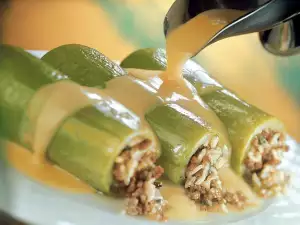
- Straight neck variety is characterized by a cylindrical body and yellow rough skin. With markedly sweet and juicy flesh, rich flavor and generous carotenoids, fiber and vitamin C;
- Patisoni are probably the most colorful in appearance marrows - they have interesting shapes and different colors ranging from white to orange and green.
Composition of marrows
Marrows are very interesting vegetables - they are not extremely rich in vitamins, but have a large mineral content - especially rich in potassium, fiber, phosphorus and calcium. They also have notable amounts of vitamin C and vitamin group B.
Marrows contain 95% water, 0.8 - 1% nitrogenous substances, nitrogen-free extract 5.75% substances 0.95% cellulose, 0.69% pentosans, 0.5% mineral salts. Their nutritional value is similar to that of cucumbers. A big advantage is that they have a small amount of sugar, of which only a tiny fraction has a significant amount of sucrose and Insulin plant substances, which makes them important and valuable food for people with diabetes.
Their mineral salts help the metabolism in the body. They contain phosphorous and potassium salts, calcium, magnesium, manganese, iron, copper, sulfur and chlorine, as well as trace elements molybdenum, titanium, arsenic, aluminum, lithium, zinc and others.
Chemical composition of marrows
100 g of raw marrows contains:
Proteins - 0.6 g Carbohydrates - 3.7 g Cellulose - 0.6 g Water - 94.5 ml and between 18 and 27 kcal;
Quantities of vitamins in 100 g raw marrows are: C - 23.0 mg, B1 - 0.03 mg, B2 - 0.04 mg, PP - 0.20 mg.
100 g of cooked without salt and drained marrows are found: 15 kcal Protein - 1 g, carbohydrates - 2.70 g Fiber - 1 g, fat - 0.36 on
After thorough cooking, marrows contain the minerals: Calcium - 18 mg, Magnesium - 19 mg -37 mg, phosphorus, potassium - 264 mg, Sodium - 3 mg, Zinc - 0.33 mg.
Vitamins in significant quantities account for: Vitamin C - 13 mg, Beta Carotene - 670 mg, Vitamin A - 1117 UI, Lutein + zeaxanthin -1150 mcg.
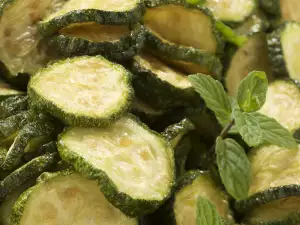
Selecting and storing marrows
When choosing marrows for culinary use, it is important to select good firmness and a smooth and undamaged form. Spotted marrows with inadequate cell turgor and with soft skin and injuries are deprived not only of taste but also their nutritional value.
For the choice of marrows, a major indication that the vegetable is fresh is it’s prickly skin. It is best to choose medium to small marrows, as larger ones have many seeds and are likely to have a bitter taste.
Marrows keep fresh no more than 2 to 4 days in a cool dry place. If you keep them in the fridge, this time jumps to 20 days, but it is important to have a well-sealed box or envelope or bag, never in plastic bags.
If you want to keep fresh marrows in the freezer before cleaning them, cut and blanch them for a few minutes in salted water. Let them dry, put them in bags and freeze.
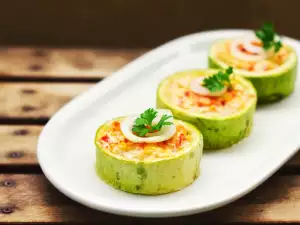
Culinary use of marrows
Marrows have widely culinary use - used raw, roasted, boiled or fried in many soups, baked dishes, vegetarian dishes, salads, soufflés, various casseroles and even cakes. Most suitable for food and cooking are marrows that are very young who are the most easily digestible. Actually, the digestibility of marrows depends on their preparation - boiled marrows are digested easily, but fried are more difficult to digest. Marrows can be used as a garnish and to prepare a variety of delicious dishes.
Recipe for stuffed marrows
Ingredients: 4 medium marrows, about 1.5 kg, 1 cup rice, 2-3 cloves of garlic, 1 carrot, 1 tomato, 1 pepper, 500 grams mince, a few sprigs of dill, 1 tablespoon oil.
Cut each marrow into 3 parts and carve it with a spoon. Arrange them in an oiled tray. Chop finely the carved inside piece and add it to a pan which has a fried chopped garlic and grated carrot in it. Once the liquid has evaporated, add and mix the minced meat, fry it and add the grated tomato. Once you fry the mince, add the rice and fry it. Add 1 cup water when it boils, season with chopped dill, and spices and fill the marrows. Put a glass of water in the pan and insert in a moderately heated oven to bake.
Benefits of marrows
Marrows are a precious gift from nature that has many benefits to the body. Besides being a regular part of many diets for weight loss, marrows are used for diseases of the cardiovascular system in hypertensive disease, liver disease, and others. Recommended on the menu for children and people who are recovering from illness. Those of us who have digestive problems can find a loyal sidekick in the form of delicious marrows because they are low-calorie and easily digestible.
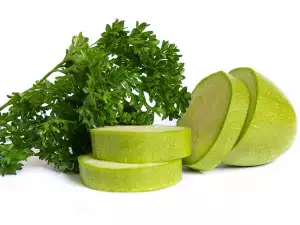
It is important to note that the organic acids in the marrows are very little, which makes them an excellent nutritional and dietary product in clinical nutrition of patients with kidney disease. Regular meals of marrows is a great way to replenish vitamin C for prevention of anemia with atherosclerosis, to improve the performance of the gastrointestinal tract. They work well for diseases of the stomach, gallbladder, duodenum, with hypertension, obesity, anemia and cardiovascular disease.
Puree of marrows is one of the first to be included in the menu of small children and babies, because these vegetables have less water than similar vegetables with high mineral content. Nursing mothers can eat marrows, because they have high digestibility and a low fiber content.
Dangers of marrows
The only damage which may arise from a person's consumption of marrows is allergy. Allergic reactions to marrows are very rare. Moreover, it is not recommended to have excess marrows for kidney diseases that are associated with difficulty in removing potassium from the body.
Beauty with marrows
Use marrows in your diet if you want to lose some weight. They are extremely low in calories and even to eat a large portion of salad of marrows, etc.., this will not affect your figure. Furthermore, green marrow seeds are a major raw material for many products for beauty - including from leading cosmetic companies as an ingredient in creams to regulate the work of sebaceous glands.
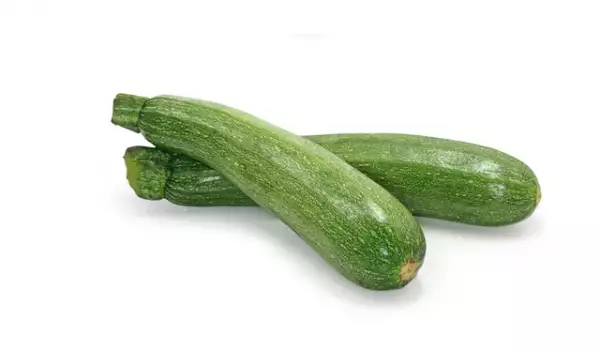

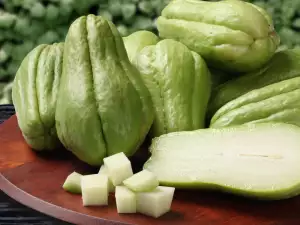
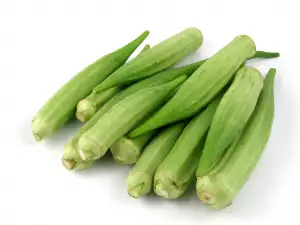

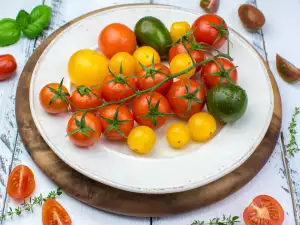
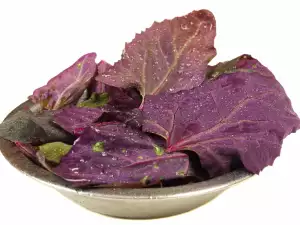
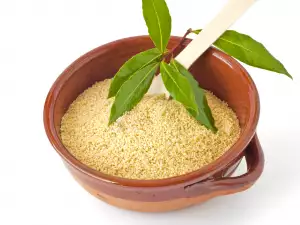
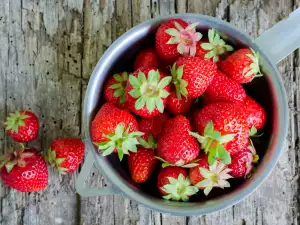

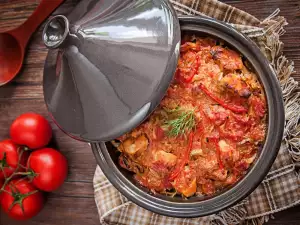

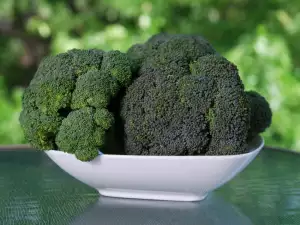
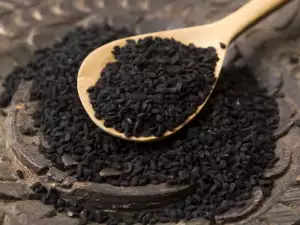
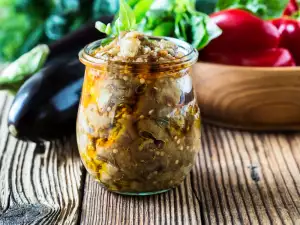

Comments